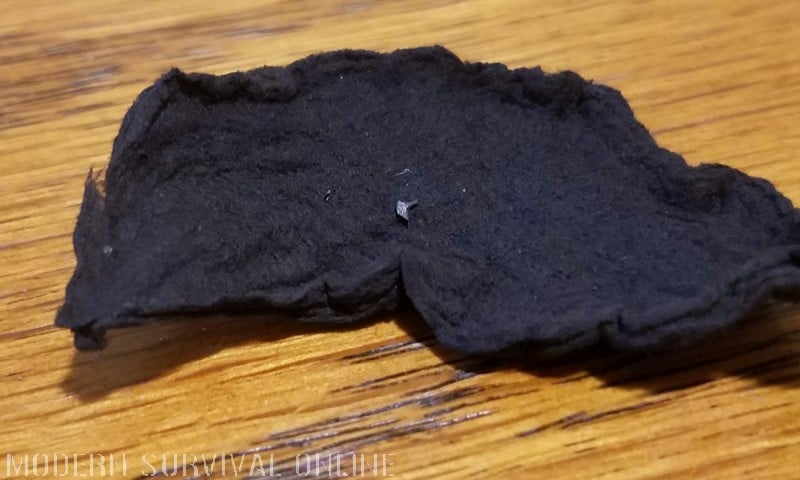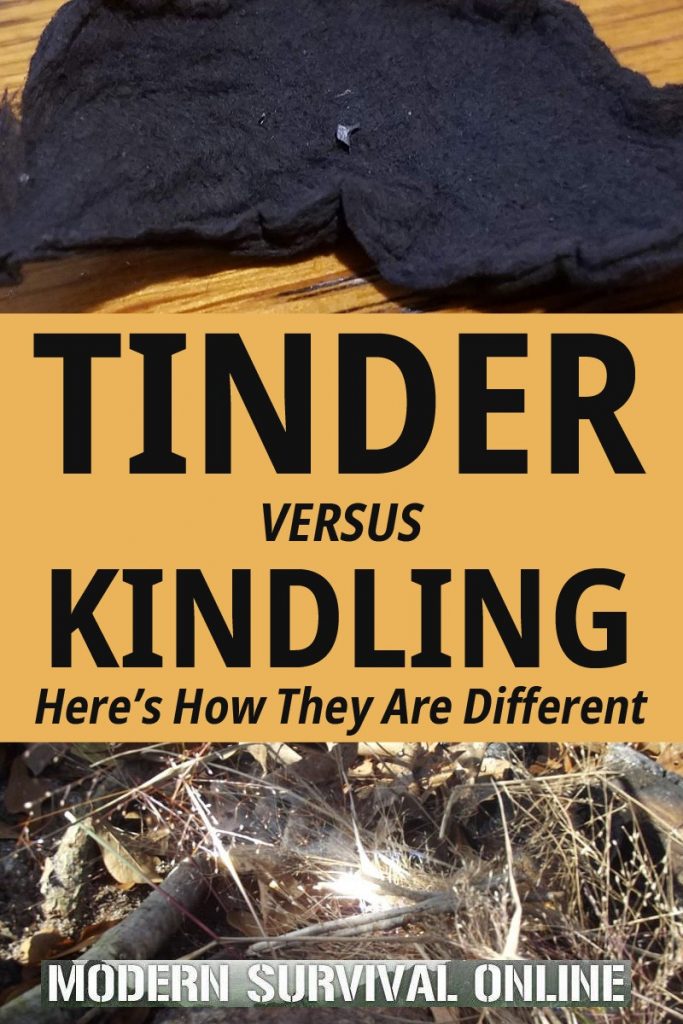You’ll learn plenty about starting a fire in all kinds of ways when you hang around preppers. In fact, you’ll likely learn more than you wanted to know!
Building a fire always starts with a few fundamental factors: heat, oxygen and fuel. Combine the three, in the right ratio, and you have a fire.
When it comes to fuel, you’ll actually need two kinds to get your fire going: tinder, for starting the fire and fuel to keep it going. Wait, I mean kindling to start the fire. No, hang on, is that right? Aren’t tinder and kindling synonyms? No!
Tinder is small, hot burning fuel that is easily ignited, used to catch a spark, and take the flame. Kindling is smaller than the main fuel of the fire, but larger than tinder. Kindling is used to ignite your larger, main fuel evenly. Choosing and assembling suitable tinder and kindling in a correct arrangement to start and maintain a fire is crucial.
Whereas primary fuel and kindling are almost universally wood, tinder might be anything. Anything that will burn hot and fast and catch fire easily makes for good tinder, and plenty of preppers will often transport their own tinder as part of a fire-starting kit complete with various tools and aids.
Tinder can take the form of:
| Wood shavings | Dried bark |
| Fatwood | Dry pine needles |
| Dried fungus | Cotton balls soaked in Vaseline |
| Rubber inner tube | Dryer lint |
| Sawdust mixed with wax | Steel wool |
| Potato chips or cheese puffs | Char cloth |
Off the shelf tinder is also available in paste and block form. These are products designed in labs to ignite readily, and to burn furiously in any conditions.

Tinder ignites readily, often with the slightest spark, but with the exception of “damp” tinder (like the cotton balls and Vaseline or the old sawdust and wax combo favored by some) it must be totally dry to work. Ideal tinder will catch a spark instantly when loosely packed.
Kindling is your “pre-fuel” intended to burn longer and more steadily than tinder in order to “channel” the fire to your larger fuel consisting of logs and branches.
Kindling, on the other hand, is almost always natural material but could be man-made. Things like:
- Small sticks
- Twigs
- Chunks of wood
- Weed stalks
- Dried grass bundles
- Pinecones
- Cardboard
- Toilet paper
- Cloth
- Newspaper “logs”
Kindling must also be dry to work, but not completely dry like tinder. If you have any trouble finding dry kindling in a damp environment, get creative! Look under rocks, logs and overhangs.
Dig to the bottom of leaf piles. Reach for the lowest branches of trees. Try to find animal nests or dens. Any sheltered place will likely produce some dry and usable kindling!
Conclusion
Tinder and kindling are often used interchangeably, but the two are very different in material and performance for fire-starting.
Learning the nuances and differences between each will give you a higher chance of success for starting a fire, and greater control over the size and intensity of the fire you want.

via Modern Survival Online https://ift.tt/3cStydq
No comments:
Post a Comment